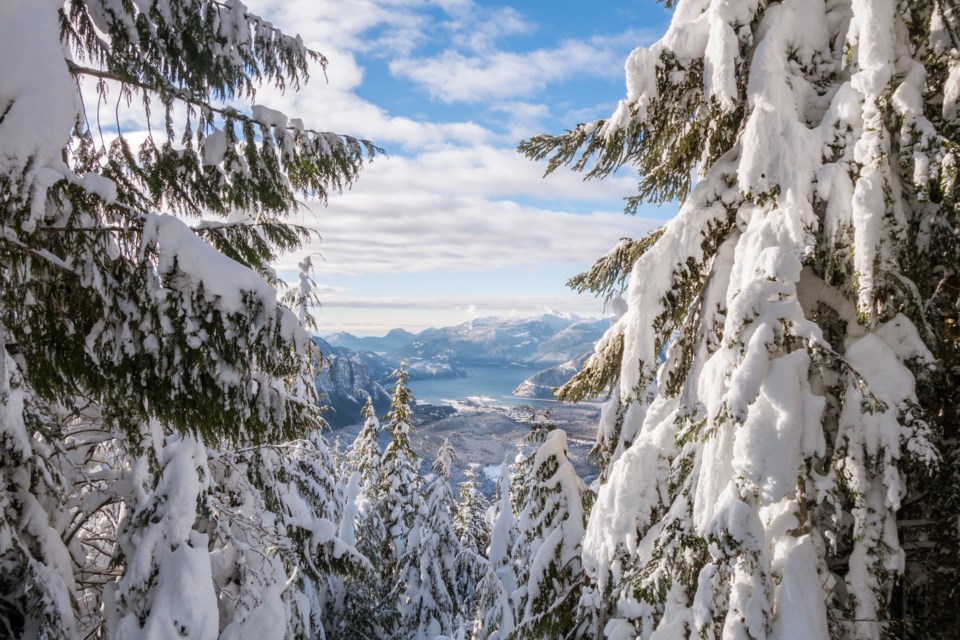What will fewer below-freezing temperature days per winter mean for Squamish?
The recent study, Lost Winter: Above-freezing days added by climate change, by U.S.-based research group Climate Central found that global warming is adding more winter days above freezing, which affects snowfall, winter sports, ecosystems, and more.
Over a decade, communities on Vancouver Island—Nanaimo and the Cowichan Valley—led Canada in winter days lost, with 18 and 17-day increases in above-zero temperatures, according to the study.
Metro Vancouver saw its non-freezing winter days spike by 16 over the last decade.
For Squamish, the data shows the district had lost four winter—or below-freezing—days.
But the study doesn't tell the whole story, where Squamish and the Sea to Sky is concerned, says Robert Whitewood, a climate scientist with Environment and Climate Change Canada who reviewed the study's data. Neither he nor Environment Canada produced the report, he stressed.
While interesting, the Lost Winter report doesn't do justice to Squamish because it looks only at December, January and February, months that are typically the coldest for the district.
The same issue is true for more northern locations, he said.
"It is generally a cold place, well below freezing, so it takes a lot of change in order for it to get close to that line," he said. "So because of the time period that we're looking at, it doesn't really reflect very well on the changes that are actually being seen on the ground."
According to Whitewood, winter time temperatures in the southern B.C. area have changed somewhere around three or four degrees over the last 70 years.
(He noted that the Lost Winter study looked at a "remarkably short" period of time.
For climate studies, he said scientists tend to look at 30 years or greater.)
"You are seeing greater changes in the wintertime than you are in the summertime," Whitewood said, noting that he doesn't drill down to the community level but is speaking about our region.
Because of this, there will be impacts on our shoulder seasons, the spring and fall, according to Whitewood.
"You're going to see changes in the form of precipitation. So you'll get more rain than snow than you used to," he said.
In the spring, this will mean earlier melting.
"That will have an effect on things like the snowpack for forestry. If you don't have that snowpack at the right time of year, you'll have drying in the summertime, and you'll have a greater risk of forest fires, for instance," he added.
With less snow and more rain, you are going to have an increased risk of pests, he noted.
Warming winters will also have an impact on things like tourism.
"So you look at things like ski resorts, they have to potentially make more snow."
Overall, of course, climate change is negative, but not all the impacts will be.
"Slightly positive things like a lower cost for snow removal, transportation could potentially be benefited from that. But also in other places in the country where they're dependent on ice roads, you're going to have a shorter season," he said.
"For getting around Christmas time, you don't have as much snow on the ground, so people can travel; also, plowing streets and things like that, you'll have cost savings for putting in salt if you use felt in your area. So there are cost benefits sometimes with these changes. But is that really worth it when you look at the grand scheme of things?"
Ultimately, we are going to have to adapt to the inevitable impact of climate change, Whitewood said.
"We're going to be living with these changes for a long time. Even if we stop producing CO2 right now, it's a persistent gas in the atmosphere, and it will continue to affect our climate until it can work its way out of the system. Between 10 and 50 years of continued warming is what we would expect, even if we were to shut off all the greenhouse gasses that are being created right now, which we're not."
—With files from Stefan Labbé/Glacier Media



.png;w=80;h=120;mode=crop)
